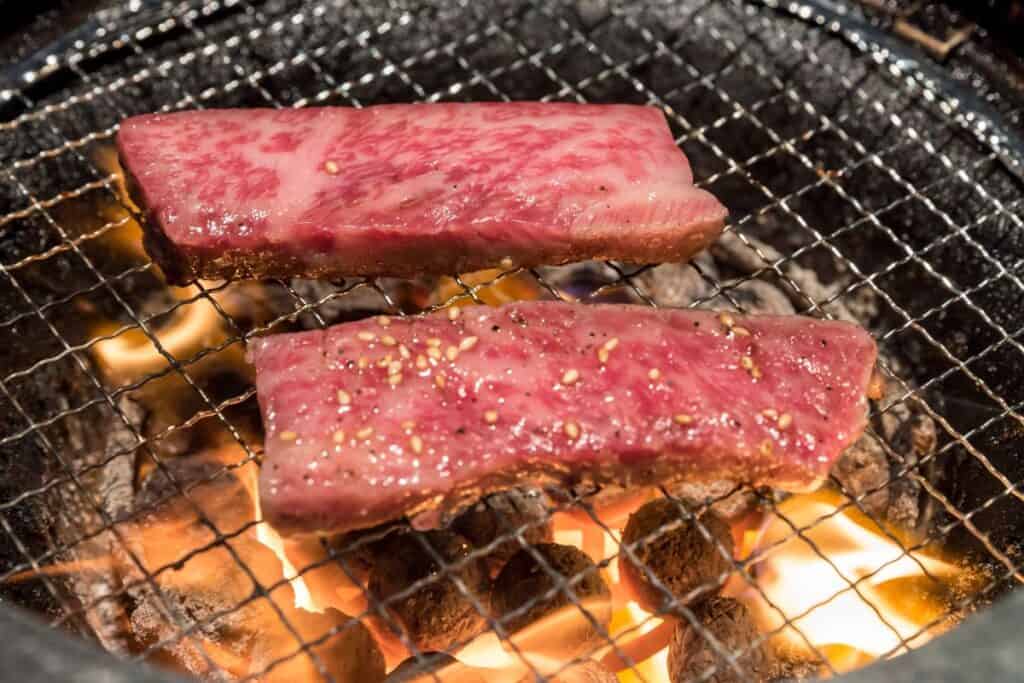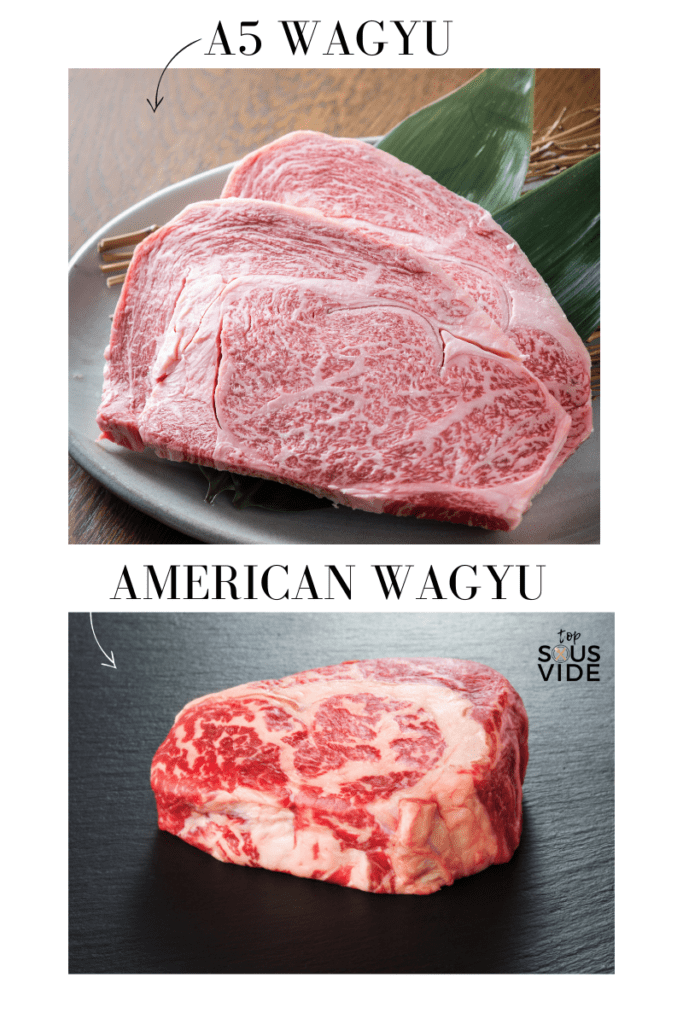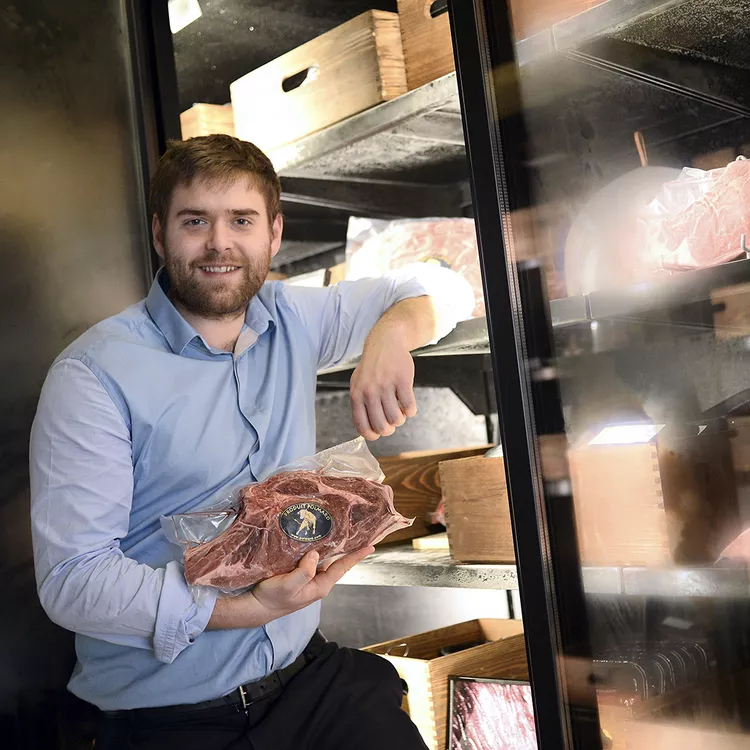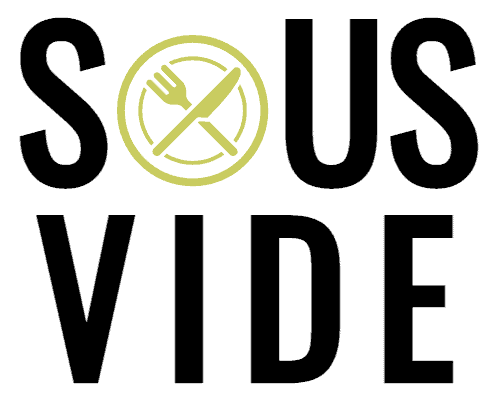A well-prepared steak is always a treat, but not every steak was created equally.
In this article, I’ll walk you through the most expensive cuts of steak that you’re likely to find. We’ll cover the factors that dictate the cost, and how to decide which one is worth splurging for.
The quality of a steak has everything to do with where it was cut from the cow, how the cow was raised, and even the genetic lineage of the breed.
Do you get what you pay for?
Usually, but the truth is that the most expensive steak isn’t always the best one.
Table of Contents
The 5 Most Expensive Cuts of Steak
Japanese Wagyu Beef
Wagyu beef is known for its tender, melt-in-your-mouth texture.
This is due to the intense marbling throughout the muscle, which results in a looser grain with a softer bite. The marbling also contributes to a richness in flavor characteristic of Wagyu beef.
Japanese Wagyu is typically sold for more than $200 per pound and about $30,000 per cow.
This beef is held to a higher grading standard than American steaks and must be imported. Wagyu cattle live their lives exceptionally well-cared for, and no expense is spared in their upbringing. As a result, the beef is of higher quality and price point.
Japanese Wagyu steak is typically cooked in a teppanyaki style.

Teppanyaki is when thin strips are quickly seared on a stainless-steel cooking surface. They’re cooked on each side just enough to warm the meat and melt the marbling throughout the slice to unlock the tenderness and flavor.
Japanese Wagyu is the prized family of beef the next two entries are more specific types of.
Japanese A5 Kobe Beef
Japanese A5 Kobe steak is the highest quality, and distinction beef can earn. It’s an ultra-rare type of Wagyu that costs $250 per pound, or more.
The A5 rating relates to steak with the ideal firmness, texture, color, yield, and marbling. It’s the absolute best of the best that you can purchase.
Kobe beef must derive from Tajima cattle that are born, fed, raised, and processed in Hyogo, Japan. So, unless you live in Tajima, Kobe beef will have to be imported, which adds additional expense.
To guarantee you’re getting the most out of this expensive cut, I recommend sous vide cooking the Wagyu. This way, you can calculate how to reach the ideal internal temperature to enjoy the most tender and flavorful steak you’ll ever taste!
Kobe has earned its reputation as the de facto top Wagyu, but Japan has a rising Wagyu star challenging its eminence; you can read about Miyazaki Wagyu here.
Olive Wagyu Beef
Olive Wagyu typically costs about $240 per pound, but steaks can range from $120 to upwards of $300.
Olive Wagyu is a type of Wagyu beef derived from cattle raised on Shodoshima island in Japan. This island is known for its olive oil industry, and as a result, the cows are raised on upcycled, dehydrated, and toasted olive pulp. It’s one of the rarest steaks you can find since only a handful of farmers produce it.
Since it is still a Japanese Wagyu, this steak is graded using the same standard. With that in mind, an A5 Olive Wagyu is of a higher quality and the most expensive of all.
You can prepare this steak by searing the thin-cut steaks briefly on each side. The goal is to create a flavorful crust that locks in moisture while melting the incredible marbling throughout the meat. The result is an ultra-tender, rich, and robust steak that’s literally bursting with flavor.
American Wagyu Beef
American Wagyu comes from ranchers who purchase a Wagyu steer from Japan. You can expect to pay about $65 per pound.
The American Wagyu Association ensures that beef labeled American Wagyu is DNA-certified. This certification involves accurate traceability back to Japan.
Unfortunately, that’s the extent of specifications for American Wagyu. It doesn’t currently have a grading classification system like Japanese-raised Wagyu.

Usually, you can think of American Wagyu as a step above prime rib. However, the quality of the beef all comes down to the rancher you’re sourcing the meat from. Very few ranches in the U.S. raise full-blood Wagyu steak; there are only a few thousand country-wide.
As always, it pays to look into where your meat comes from, especially in this instance. All so you can ensure you’re purchasing excellent quality beef that reflects the expense.
I’d also recommend preparing American Wagyu using a sous vide method. This way, you can guarantee that you’re cooking the steak to the proper internal temperature and can achieve that exact doneness from edge to edge. It’s a foolproof method that ensures you’ll enjoy the steak you splurged on.
Cote De Boeuf Rib Steak
You can find Cote De Boeuf Rib Steak for around $40 per pound, which is much more affordable than the other steaks featured in this list.
As a result, it’s an excellent entry point to higher quality and more expensive cuts. Plus, it’s well-suited for a variety of cooking methods. So, whether you prefer to grill, pan-fry, or sous vide ribeye, it will come out great.
Cote De Boeuf is French for “Side of Beef.” It refers to a thick, bone-in ribeye steak. It doesn’t derive from a specific genetic line of cattle, but it’s still an exceptionally tasty cut of beef.
It’s tender since it’s cut from the rib primal area of cattle, which sees very little weight, use, or exercise during the cow’s life. It’s served with the bone-in, which adds even more flavor and temperature control to the meat.
It has an intense beefy flavor that’s more apparent than the mild-flavored Wagyu steaks. The bone stays cool and takes longer to heat up. With the proper cooking, the meat will stay closer to rare or medium rare for ultimate tenderness and flavor.
Most Expensive Steak in the World: Vintage Cote De Boeuf Rib Steak
Though Cote De Boeuf typically comes at an approachable cost, there’s a select cut prepared by a famous butcher in Paris that can be only found in select restaurants for a small fortune.
This steak specifically is the Vintage Cote De Boeuf Rib Steak from Boucherie Polmard in France. It comes only from the Polmard Eleveur Boucher and costs $3,200 per bone-in ribeye.
Why $3,200 you ask? Sixth generation head butcher, Alexandre Polmard, has a very specific way of aging the beef for 15 years. This involves air chilling the meat down to -45 °F by blowing extremely cold air on it at 75 miles per hour. Alexandre’s father and grandfather came up with the method, which they call hibernation, in the 1990s.

A dry aged steak has a unique flavor profile. Imagine that to the extreme of a 15yr vintage steak! I frankly can’t, but it’s become a favorite of Michelin-starred restaurants around the world, which have placed years of supply on backorder.
According to a TIME magazine reporter, trying the vintage steak was a “really cool” experience, but that’s all about all he could come up with to describe it. I consider anything short of sublime a tragic disappointment.
Cost Factors
Cattle Genetics
The exclusivity of genetics can really drive up the price of a steak. For instance, the Wagyu genetic line is protected and dates back almost 35,000 years to its wild ancestor, the auroch. Modern Wagyu originated from crossing native Japanese cattle with imported breeds, which began in 1868.
For a cow to be considered Wagyu, it is either of the Japanese Black, Japanese Brown, Japanese Polled, or Japanese Shorthorn lineage.
According to Wagyu.org,
“The production of Wagyu beef in Japan is highly regulated, and progeny testing is mandatory. Only the very best proven genetics are kept for breeding. Realizing the value of their unique product, the Japanese Government banned the export of Wagyu and declared them a national living treasure.”
The rarity of genetics makes imported Japanese Wagyu so sought after and consequently so expensive.
Rearing And Feeding
Not only does the type of cattle affect the price of the resulting steak, but the myriad of factors that make up raising the cattle also have an impact on the retail price.
It’s undoubtedly cheaper to squish a bunch of cattle into a small space and raise them on corn and byproduct. However, the resulting health complications of the cattle will change the beef produced.
The better care taken in raising the cattle will drive up the price of the steak. Grass-fed beef from cows that consume grass will be more expensive than your standard beef. Grass-fed and finished means the cattle ate only grass throughout the entirety of their life and thus is even more expensive.
Then, you have organic beef produced from cattle that’s been fed certified organic feed. These cows have never been administered antibiotics or hormones and are pasture raised. Even acquiring the organic stamp of approval is an expense. All of these additional expenses add up and are factored into the sale price of the steak.
Wagyu beef is on a whole other level of care. The cows have names instead of numbers. And each cow has a birth certificate outlining its bloodline for transparent traceability. They’re fed a healthy, high-fiber diet. The ranchers brush Wagyu cattle to increase blood circulation and relieve stress. They’re even given sake during hot weather to stimulate their appetite.
So much care goes into raising Wagyu beef that warrants the resulting price point.
Limited Supply
Japanese Wagyu denotes a different standard of cattle raising and faces elevated grading standards than American Wagyu. So, in order to taste the incredible flavor and tenderness that Japanese Wagyu is known for, you’d have to buy imported beef. As you can imagine, the expense of shipping heavy and perishable products across the globe will affect the sale price of that meat.
Additionally, to be considered Kobe, beef must derive from Tajima cattle that are born, fed, raised, and processed in Hyogo, Japan. The more limited the supply, the more people will pay for that exclusivity.
Tenderness and Location
It’s no secret that everyone wants a tender, melt-in-your-mouth steak.
The more weight or exercise that a muscle on a cow undergoes throughout its life causes that beef to become tough, chewy, or gristly.
Tender cuts of steak come from little-used or unused portions of the cow, like the tenderloin or prime rib area. This is why filet mignon, ribeye, and porterhouse are so sought after; they come from these tender portions of the cow.
However, these tender areas only comprise around 8% of the cow’s total beef. High demand for succulent meat plus the rarity of these cuts is what drives up the price of tender steaks.
FAQs: Expensive Steaks
What is the highest quality steak in the world?
Japanese A5 Kobe is easily the highest-quality steak in the world. Kobe beef is an ultra-rare type of Wagyu. Kobe must derive from Tajima cattle born, fed, raised, and processed in Hyogo, Japan. The standards are strict, and A5 denotes the absolute best-of-the-best Kobe beef.
What is the most expensive steak in the world? For a steakhouse vs at home?
The Vintage Cote De Boeuf from Boucherie Polmard is the most expensive steak in the world and available only in restaurants. A single steak can cost up to $3200 and there are reports over $10K has been offered for a single steak. As the name implies, these are vintage steaks that are basically cryogenically frozen for roughly 15 years to preserve the initial aged qualities.
A Japanese A5 Wagyu Tomahawk is the most expensive steak in the world available to cook at home. There are incredible costs and strict standards to uphold when raising Wagyu beef. Plus, high-grade wagyu must be imported. In a steakhouse, a whopping 30-45oz Japanese A5 Wagyu Tomahawk steak will cost $1,000. If you were to purchase one and cook it at home, it’ll probably run you about $600 (not including shipping).

